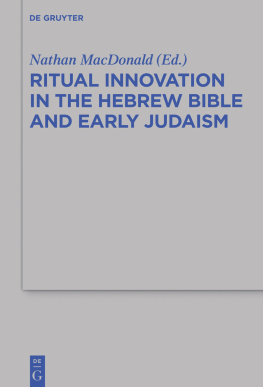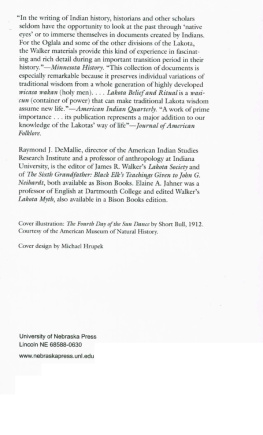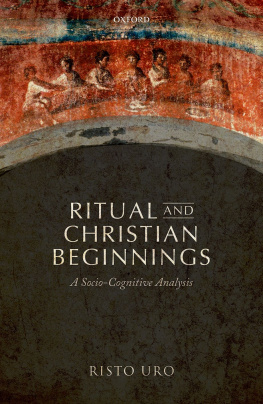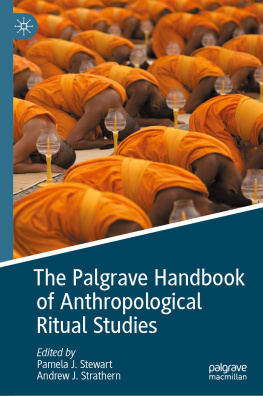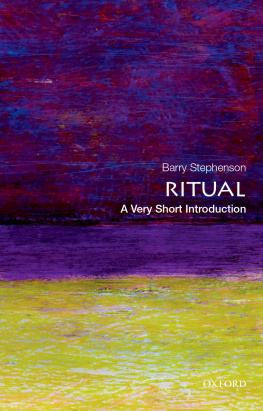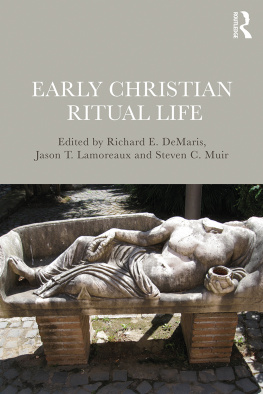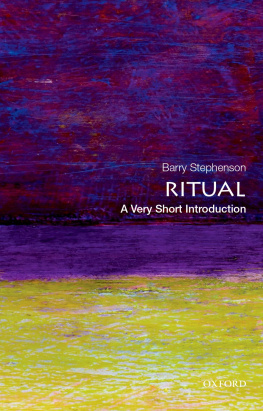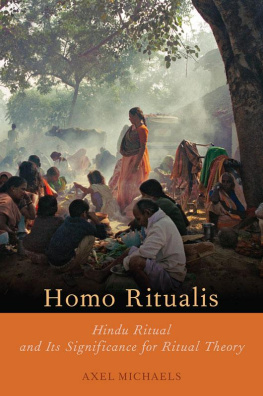
Ritual in Deuteronomy
Ritual in Deuteronomy explores the symbolic world of Deuteronomy's ritual covenant and curses through a lens of religious studies and anthropology, drawing on previously unexamined Mesopotamian material.
This book focuses on the ritual material in Deuteronomy including commands regarding sacrifice, prayer objects, and especially the dramatic ritual enactment of the covenant including curses. The book's most unique feature is an entirely new comparative study of Deut 2730 with two ritual texts from Mesopotamia. No studies to date have undertaken a comparison of Deut 2730 with ancient Near Eastern ritual texts outside of the treaty oath tradition. This fresh comparison illuminates how the ritual life of ancient Israel shaped the literary form of Deuteronomy and concludes that the performance of oaths was a social strategy, addressing contemporary anxieties and reinforcing systems of cultural power.
This book offers a fascinating comparative study which will be of interest to undergraduate and graduate students in biblical studies, classical Hebrew, theology, and ancient Near Eastern studies. The book's more technical aspects will also appeal to scholars of the Pentateuch, Deuteronomy, Biblical Law, Ancient Near Eastern History, Mesopotamian Studies, and Classics.
Melissa D. Ramos is Assistant Professor of Biblical Studies at Portland Seminary of George Fox University, USA. Her research interests include ritual in the Hebrew Bible, loyalty oaths, and feminist hermeneutical approaches.
The Ancient Word
Series editor: Seth Sanders, Professor of Religious Studies, University of California Davis, USA
The Ancient Word is dedicated to publishing exciting, broadly relevant new research in ancient Near Eastern and biblical studies. Each book represents an advance both philologically, in our understanding of ancient sources, and intellectually, in providing fresh ways to think about what the remote past means. Herder once imagined an archive of paradise containing the first writing in the world from its oldest civilization: primordial texts holding the keys to understanding our formation. In unearthing the remains of the ancient Near East, we have something like this archive - but it remains mostly unread. Herder's bold search has been replaced with safer techniques, from sweeping theories of oral vs. literate societies to reductive legitimation theories that boil culture down to power. This series showcases fresh work that helps unlock this archive's potential.
Baal and the Politics of Poetry
Aaron Tugendhaft
Beyond Orality
Biblical Poetry on its Own Terms
Jacqueline Vayntrub
Ea's Duplicity in the Gilgamesh Flood Story
Martin Worthington
Ritual in Deuteronomy
The Performance of Doom
Melissa D. Ramos
https://www.routledge.com/classicalstudies/series/ANCWORD
First published 2021
by Routledge
2 Park Square, Milton Park, Abingdon, Oxon OX14 4RN
and by Routledge
52 Vanderbilt Avenue, New York, NY 10017
Routledge is an imprint of the Taylor & Francis Group, an informa business
2021 Melissa D. Ramos
The right of Melissa D. Ramos to be identified as author of this work has been asserted by her in accordance with sections 77 and 78 of the Copyright, Designs and Patents Act 1988.
All rights reserved. No part of this book may be reprinted or reproduced or utilised in any form or by any electronic, mechanical, or other means, now known or hereafter invented, including photocopying and recording, or in any information storage or retrieval system, without permission in writing from the publishers.
Trademark notice: Product or corporate names may be trademarks or registered trademarks, and are used only for identification and explanation without intent to infringe.
British Library Cataloguing-in-Publication Data
A catalogue record for this book is available from the British Library
Library of Congress Cataloging-in-Publication Data
A catalog record has been requested for this book
ISBN: 978-1-138-57098-6 (hbk)
ISBN: 978-0-367-76407-4 (pbk)
ISBN: 978-0-203-70306-9 (ebk)
Typeset in Sabon
by KnowledgeWorks Global Ltd.
For Francisco
love is as strong as death, passion as relentless as Sheol
Contents
List of tables
List of abbreviations
1Ritual studies and Deuteronomy
1.1Introduction
1.2Ritual studies and Deuteronomy
1.3Prior and current scholarship on Deut 2730
1.4Oral and ritual performance of treaty forms and curse themes
1.5Conclusion
2The ritual performance of oaths
2.1Introduction
2.2Oaths, treaties, and ritual studies
2.3The performance of treaties and covenants
2.4Ritual action in treaties, covenants, and incantations
2.5Conclusion
3Deuteronomy 2730 and incantation rituals
3.1Common social rhetoric and symbolic system
3.2Parallel curse sequence and structural formulation
3.3Congruent curse themes in Deut 2730 and Maql and urpu
3.4Cosmological setting and the significance of city gates
3.5Propagation of curses
3.6Conclusion
4Ritual and the literary unity of Deuteronomy 2728
4.1Introduction
4.2Curse inscriptions in the ancient Near East and in the Levant
4.3What was written on the stones? Literary analysis of Deuteronomy 27
4.4Conclusion
5Ritual innovation in Deuteronomy
5.1Introduction
5.2Deuteronomy 12 and the Law of Centralization
5.3Ritual innovation in Deuteronomy 6
5.4Conclusion
Conclusion
- List of tables
- List of abbreviations
- 1 Ritual studies and Deuteronomy
- 1.1 Introduction
- 1.2 Ritual studies and Deuteronomy
- 1.3 Prior and current scholarship on Deut 2730
- 1.4 Oral and ritual performance of treaty forms and curse themes
- 1.5 Conclusion
- 2 The ritual performance of oaths
- 2.1 Introduction
- 2.2 Oaths, treaties, and ritual studies
- 2.3 The performance of treaties and covenants
- 2.4 Ritual action in treaties, covenants, and incantations
- 2.5 Conclusion
- 3 Deuteronomy 2730 and incantation rituals
- 3.1 Common social rhetoric and symbolic system
- 3.2 Parallel curse sequence and structural formulation
- 3.3 Congruent curse themes in Deut 2730 and Maql and urpu
- 3.4 Cosmological setting and the significance of city gates
- 3.5 Propagation of curses
- 3.6 Conclusion
- 4 Ritual and the literary unity of Deuteronomy 2728
- 4.1 Introduction
- 4.2 Curse inscriptions in the ancient Near East and in the Levant
- 4.3 What was written on the stones? Literary analysis of Deuteronomy 27
- 4.4 Conclusion
- 5 Ritual innovation in Deuteronomy
- 5.1 Introduction
- 5.2 Deuteronomy 12 and the Law of Centralization


